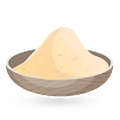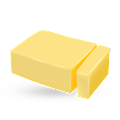Nan-e shirmal
(Sheermal, شیرمال)
Nan-e shirmal is a type of enriched, slightly sweet Persian flatbread that originates in Iran, where it is often enjoyed with tea or served alongside soft cheeses and clotted cream. Its name comes from the Persian words “shir,” meaning milk, and “malidan,” meaning to rub or knead, referring to the way milk is incorporated into the dough to create a tender, rich texture.
Unlike simpler flatbreads such as taftoon or lavash, nan-e shirmal is prepared with sugar, butter or ghee, and sometimes saffron, giving it a light golden color and a faintly aromatic flavor. The history of nan-e shirmal is connected to the development of more refined breads in Persian cuisine, especially those associated with festive occasions and urban bakeries.
As access to white flour, sugar, and dairy products expanded in Iran’s cities, bakers began producing richer breads to cater to tastes for softer and slightly sweet baked goods. Read more
Nan-e shirmal evolved from earlier milk breads, eventually becoming a recognizable style in bakeries across Iran and in parts of the Indian subcontinent, where similar breads are also popular. Over time, it became known as a bread often served during special gatherings and celebrations.
To prepare nan-e shirmal, wheat flour is combined with warm milk, sugar, and a little yeast to form a soft, pliable dough. Some recipes incorporate yogurt for added tenderness, while others add melted butter or ghee directly to the mixture. Once the dough has risen until doubled in volume, it is divided into portions and rolled into rounds or ovals about 1 centimeter thick.
Before baking, the surface is brushed generously with a mixture of egg yolk and milk, which helps create a shiny, golden crust. In many bakeries, saffron-infused milk is also used to glaze the bread, contributing both color and aroma. After baking in a hot oven or on the floor of a clay tanoor, nan-e shirmal emerges with a soft interior and a lightly crisp exterior.
The bread is often sprinkled with sesame seeds or nigella seeds before baking for additional texture. It is typically eaten warm, torn into pieces, and paired with fresh herbs, cheese, or jams. Nan-e shirmal is common in Iranian bakeries, where it is sold fresh and wrapped in paper.
It is usually enjoyed at breakfast or in the late afternoon with strong black tea. In some households, it is reserved for special breakfasts or shared with guests as part of a larger spread of breads and accompaniments.





















